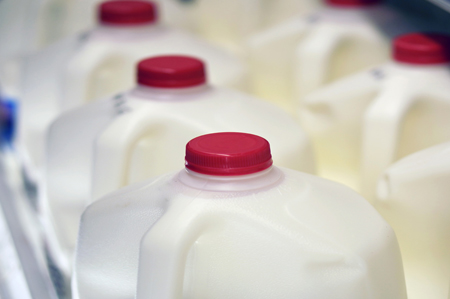EU milk output surge ‘over’, boding well for prices
Category: Dairy
 (Agrimoney) – The surge in European Union milk production, blamed by many commentators for the extent of the world milk price downturn, is over, said Fonterra and Rabobank, which flagged support for values from Chinese dryness too.
(Agrimoney) – The surge in European Union milk production, blamed by many commentators for the extent of the world milk price downturn, is over, said Fonterra and Rabobank, which flagged support for values from Chinese dryness too.
“Milk production in the EU is now in decline,” said John Wilson, the chairman of New Zealand-based Fonterra, the world’s top milk exporter, which monitors closely the global industry.
Rabobank estimated that milk output in the EU, the top producer, had fallen by 1.5% in June, a month for which official data are due imminently.
The European Commission’s latest data, for May, show a year-on-year increase of 0.8% in output, the slowest since the removal at the end of March 2015 of production quotas, which sent volumes soaring.
‘Milk production is reducing’
The comments come the day after Murray Goulburn, Australia’s top milk processor, highlighted the pace of EU milk output as “the key driver” for milk prices.
And, indeed, Fonterra’s comments came as the co-operative raised by NZ$0.50 per kilogramme of milk solids, to NZ$4.75 per kilogramme of milk solids for 2016-17, citing support from lower volumes in many major producing countries.
“Milk production is reducing in most dairying regions globally in response to low milk prices, and this is bringing the world’s milk supply and demand back into balance,” Mr Wilson said.
He added that dairy prices “remain at unrealistically low levels”, even though values at GlobalDairyTrade, the twice-month auctions run by the co-operative, soared 12.7% at the latest event, close to a 16-month high.
‘Greater-than-expected imports’
Rabobank forecast that the rally in prices – which has seen December whole milk powder futures soar 24% so far this month on New Zealand’s NZX exchange – would “continue into the first half of 2017”.
“The strength of the rally will depend on the seasonal flush in Australia and New Zealand,” where output typically peaks in October, “along with Chinese import demand”, the bank added.
And Chinese import prospects were being supported by hot and dry weather, which has affected much of the North China Plain and Yangtzee Valley, and “negatively impacted” domestic milk output.
The conditions “could see production contract further, and trigger greater-than-expected import volumes in the closing months of 2016”, the bank said.
Back in the black
The Fonterra price upgrade represents a boon to its producers, who saw payments slump to NZ$3.90 per kilogramme of milk solids for 2015-16.
Combined with an earnings payout of NZ$0.50-0.60 per kilogramme of milk solids, the revision will take many producers back into profit, with the breakeven level pegged on average at NZ5.05 per kilogramme of milk solids, according to industry group DairyNZ.
Shares in Fonterra Shareholders Fund closed up 0.7% at NZ$5.94, matching a four-month closing high.
EU milk output has not declined since early 2015, and there are ideas that this decline reflected somewhat, rather than fundamental weakness, an attempt by producers to avoid penalties for exceeding output quotas then still in existence.
The EU’s last prolonged spell of output decline was a 12-month spell of year-on-year declines in production up to June 2013.




